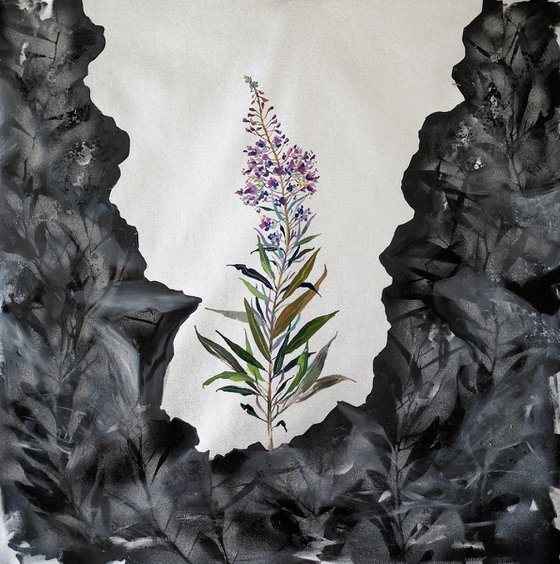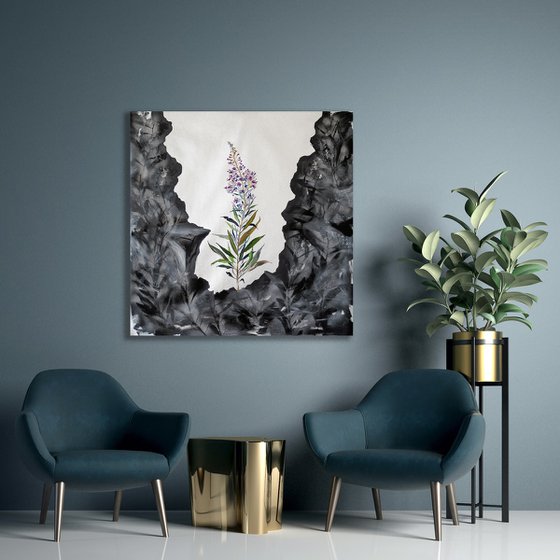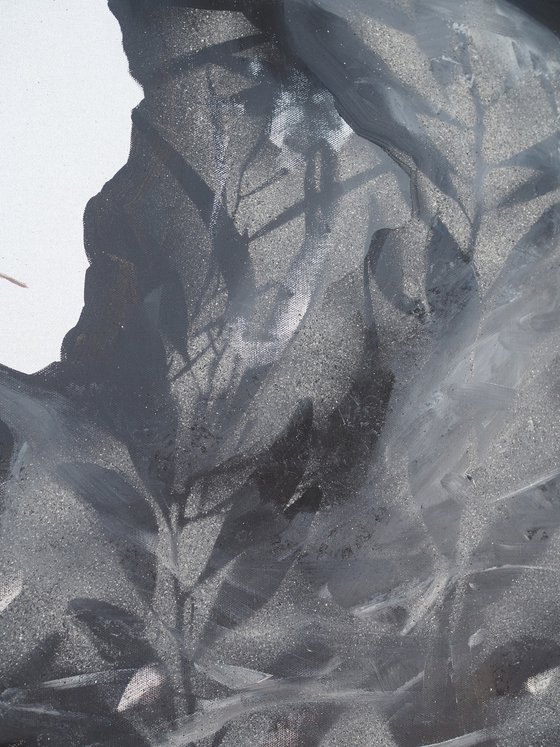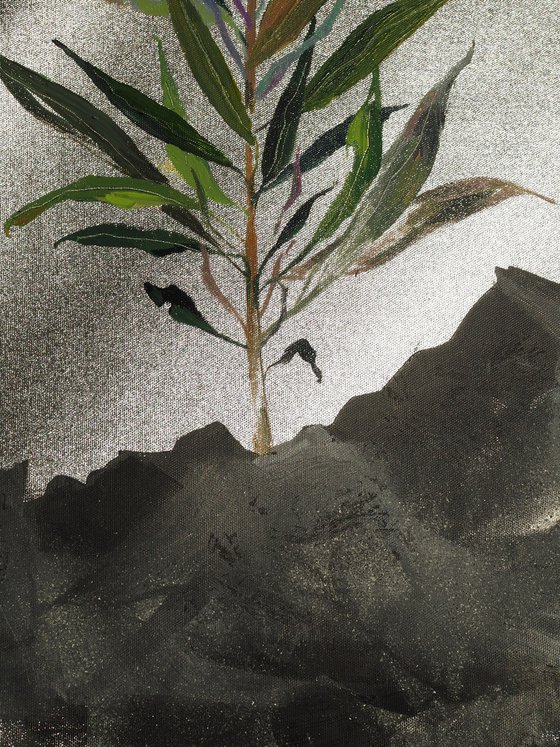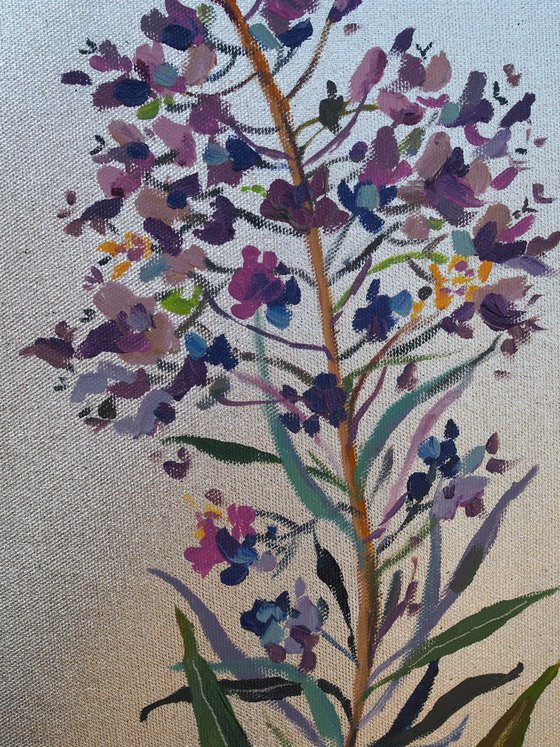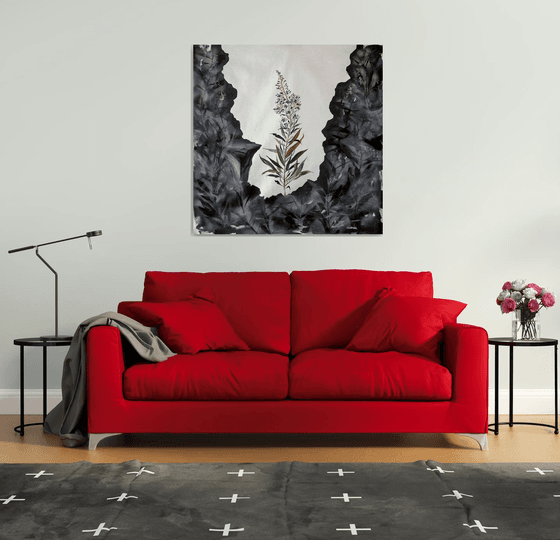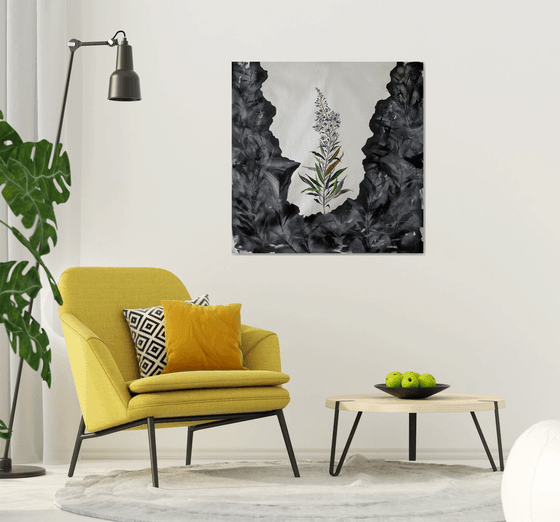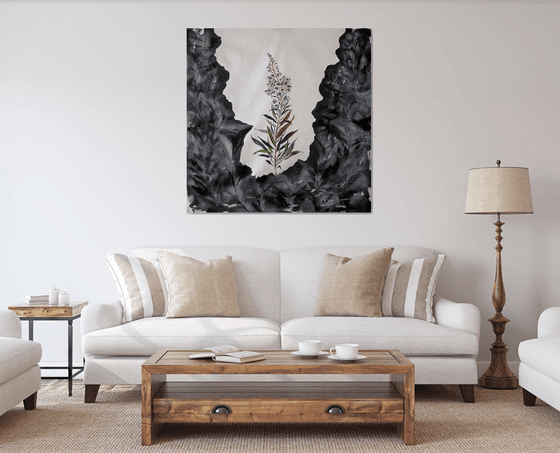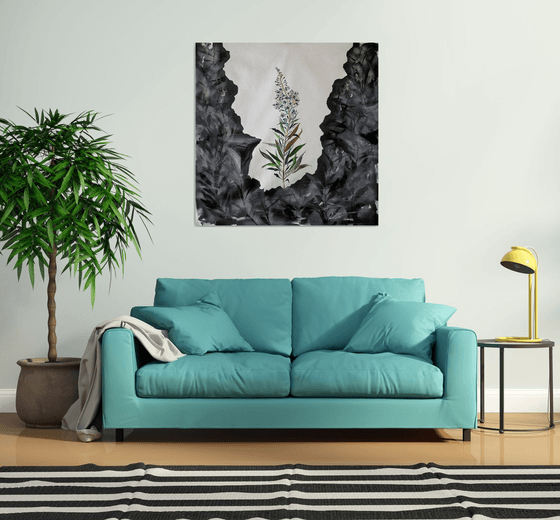Main Navigation
Original artwork description:
"Fireweed" is about the intrusion of the living into spaces of ruin. At its core is the image of the plant that rapidly colonized London’s bombsites during the Second World War: rosebay willowherb, commonly called fireweed. It appeared on waste ground, collapses, and burn scars, favoring soil that had passed through flame; by 1944 it was recorded on the vast majority of bombsites, and naturalists called it a pioneer of blasted terrain.
Transposing this image to today’s Ukraine, the work does not claim botanical accuracy: in our cities, fireweed does not form alleys across the rubble. Yet that very absence becomes part of the gesture. I “transplant” the symbol — like a metaphorical seedling of hope — into our conditions. In this way, fireweed shifts from London’s local memory to a universal language of survival: wherever the trace of an explosion remains, the order of succession — the slow return of life and meaning — begins.
In Fireweed, hope is neither optimism nor consolation, but a capacity to push through the mesh of trauma. Between charred lines, cracks, and voids, the flower’s vertical axis emerges as a temporary brace. This is a work about memory that does not close the wound but keeps a vector — ash to sprout, silence to voice — and, in doing so, makes our “after” imaginable.
Materials used:
oil, concrete
Tags:
#nature #rocks #london #grey #flower #plants #leaves #silver #war #hope #concrete #fireweed #silhoette #ruined #ukranianFireweed (2025) Oil painting
by Delnara El
29 Artist Reviews
£2,367.95
- Oil painting on Canvas
- One of a kind artwork
- Size: 110 x 110cm (unframed) / 100 x 100cm (actual image size)
- Ready to hang
- Signed certificate of authenticity
- Style: Impressionistic
- Subject: Flowers and plants
Loading
Original artwork description
"Fireweed" is about the intrusion of the living into spaces of ruin. At its core is the image of the plant that rapidly colonized London’s bombsites during the Second World War: rosebay willowherb, commonly called fireweed. It appeared on waste ground, collapses, and burn scars, favoring soil that had passed through flame; by 1944 it was recorded on the vast majority of bombsites, and naturalists called it a pioneer of blasted terrain.
Transposing this image to today’s Ukraine, the work does not claim botanical accuracy: in our cities, fireweed does not form alleys across the rubble. Yet that very absence becomes part of the gesture. I “transplant” the symbol — like a metaphorical seedling of hope — into our conditions. In this way, fireweed shifts from London’s local memory to a universal language of survival: wherever the trace of an explosion remains, the order of succession — the slow return of life and meaning — begins.
In Fireweed, hope is neither optimism nor consolation, but a capacity to push through the mesh of trauma. Between charred lines, cracks, and voids, the flower’s vertical axis emerges as a temporary brace. This is a work about memory that does not close the wound but keeps a vector — ash to sprout, silence to voice — and, in doing so, makes our “after” imaginable.
Materials used:
oil, concrete
Tags:
#nature #rocks #london #grey #flower #plants #leaves #silver #war #hope #concrete #fireweed #silhoette #ruined #ukranian14 day money back guaranteeLearn more
